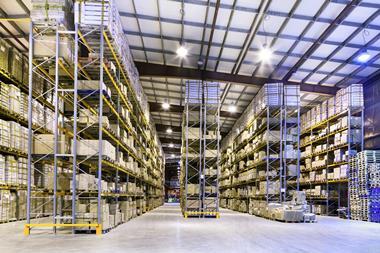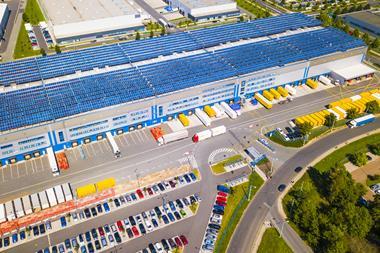The Covid-19 pandemic catalysed investment into the logistics market following the unexpected spike in demand from ecommerce and third-party logistics occupiers.

As these demand tailwinds recede in the face of a rising-interest-rate environment and potential recession, investors who overpaid or leveraged too aggressively are facing a challenging moment.
While investors assess the changing real estate and capital markets landscape, we believe that a potential opportunity exists for those capable of responding to the continued structural undersupply of high-quality, well-located and, crucially, sustainable logistics sites.
It is no secret that much of logistics outperformance is underpinned by (under)supply. In the UK, there is limited standing stock and land availability remains severely constrained, particularly in urban areas, due to a focus on residential development in the past decade. A similar supply constraint is notable in continental Europe, where local logistics markets are often characterised by high barriers to entry limiting new supply.
To pick the brightest spots, investors also need to look more critically at the changing factors driving sector growth. Not every logistics occupier is going to flourish in the post-pandemic world, and requirements are no longer mainly coming from ecommerce, which is now well established and in some cases over-extended following the pandemic, and therefore unlikely to generate significant future growth.
Rather, demand is increasingly for warehousing and large, flexible spaces for manufacturers, light-industrial users and other occupier types such as film studios. In the UK, the range of occupier demand now coming through is a notable side effect of Brexit, which has resulted in businesses ‘near-shoring’ to hold inventory and components in the UK rather than abroad.

Critically, sustainability is increasingly a table stakes issue. Across the industry, logistics tenants are now frequently moving to new sites at the end of leases to be in more sustainable buildings. With high-quality tenants increasingly setting ambitious decarbonisation goals, or simply aiming to reduce energy costs, buildings that do not meet high sustainability standards are becoming a liability.
This trend is likely to continue, particularly as European countries tighten environmental regulations in the drive to achieve net zero.
The logistics market will become increasingly bifurcated on sustainability lines, in response to occupier, institutional investor and regulatory requirements. Most existing stock across the UK and Europe does not meet the sustainability requirements now being demanded by occupiers and so will require redevelopment as it becomes obsolete.
This trend presents an opportunity to develop high-performance buildings. To take one example, our recent logistics hub servicing the Turin market is designed to achieve regulated net zero carbon in operation, with 1,200-kilowatt solar panels to be installed on the roof. The BREEAM ‘Excellent’-rated building includes 100% electric vehicle charging points and has the flexibility to expand photovoltaic capacity to service electronic vehicle points, alongside enabled areas for future battery installation to hold excess solar power.
While the logistics sector is facing challenges from softening occupier demand, the increased cost of finance and macroeconomic headwinds, opportunities remain for those able to respond to institutional demand for high-quality, strategically located logistics spaces with future-proof potential.
George MacKinnon is managing director of PineBridge Benson Elliot





























No comments yet